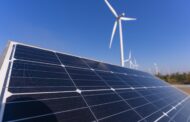Over the past decade, global solar generation has grown ninefold to reach 1500 Terawatt-hour (TWh) per year while wind generation has tripled to 2300 TWh per year (Figure 1). This corresponds to compound growth rates of 22% and 11% per year respectively. In contrast, hydro, nuclear and coal generation had growth rates of about 1% per year, and gas 3%.
The solar growth rate of 22% per year is equivalent to doubling every 3 years. At this growth rate, solar generation will reach 100,000 TWh per year in 2042 which is enough to fully decarbonize the global economy.
Solar generation (TWh per year) is tracking to surpass nuclear generation in 2026, wind in 2027, hydro in 2028, gas in 2030 and coal in 2032.
The leading countries for per capita solar and wind generation are all in Europe, except Australia (Figure 2). Also shown in Figure 2 is global per capita generation from hydro and nuclear.

Unlike in Europe, Australia cannot share electricity across national boundaries to reduce the effects of variable weather and demand. Australia must go it alone by deploying enough storage, transmission and demand management. Australia’s National Electricity Market currently has 34% generation from solar and wind. It is highly stable, and both emissions and wholesale prices are falling.
Assuming that the Government target of 82% renewables in 2030 is met (highly likely if there is no change of Government at the 2025 election), then over the decade 2020 to 2030 fossil generation falls from 75% to 18%, while solar and wind generation does the opposite, rising from 19% to 75% (plus 7% from hydro, Figure 3).











